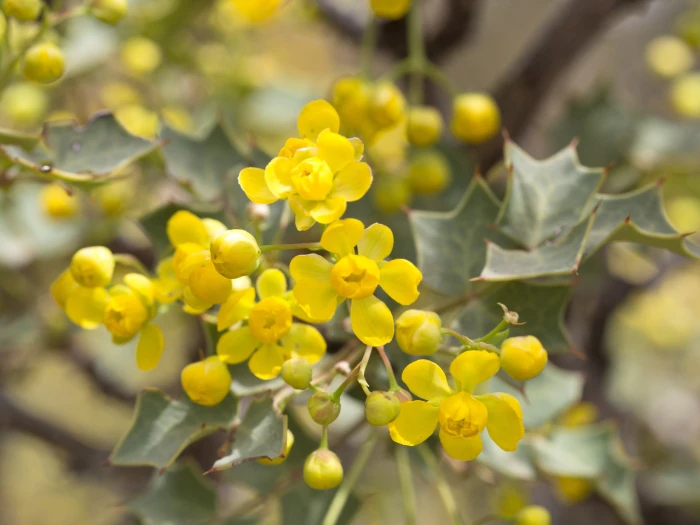Fremont’s Mahonia
(Alloberberis fremontii)
Fremont’s Mahonia (Alloberberis fremontii)
/
/

Robb Hannawacker
Public Domain
Image By:
Robb Hannawacker
Recorded By:
Copyright:
Public Domain
Copyright Notice:
Photo by: Robb Hannawacker | License Type: Public Domain | License URL: http://creativecommons.org/publicdomain/zero/1.0/ | Rights Holder: Robb Hannawacker | Publisher: iNaturalist | Date Created: 2021-04-22T12:16:40-07:00 |

















































Estimated Native Range
Climate Requirements for Eau Claire, Wisconsin
| This Plant | Your Site | Plant Suitability for Your Location | ||
|---|---|---|---|---|
| • Precipitation | 6" - 70" | 31" | Your precipitation may be too high for this plant. | Too high |
| • High Temp. | 62°F - 105°F | 84°F | Your summer temperatures are normal for this plant. | Excellent |
| • Low Temp. | 4°F - 43°F | 3°F | Your winter temperatures may be too cold for this plant | Too cold |
This plant may not grow well at your location - your precipitation is too high.
Summary
Alloberberis fremontii, commonly known as Fremont’s Mahonia, is an evergreen shrub native to the chaparral and desert scrub communities of the Southwestern USA and Northwestern Mexico, particularly thriving in rocky and sandy soils. It typically grows to a height of 3-8 feet and a width of 3-7 feet. This plant features pinnate leaves with spiny leaflets and bears clusters of fragrant yellow flowers in the spring, which mature into blue-black berries that are attractive to birds and other wildlife. The flowers are moderately showy and are followed by decorative berries. The foliage may take on purplish hues in colder weather, adding to its ornamental value.
Fremont’s Mahonia is valued for its drought tolerance and its ability to provide year-round interest with its evergreen foliage, fragrant flowers, and berries. It is suitable for xeriscaping, naturalistic plantings, and as a focal point in water-conserving gardens. It prefers full sun to partial shade and requires well-drained soils; it is adaptable to a range of soil types, provided they are not waterlogged. While it is generally low-maintenance, it can be susceptible to rust and leaf spot diseases, and its spiny leaves may require careful handling during planting or maintenance.CC BY-SA 4.0
Fremont’s Mahonia is valued for its drought tolerance and its ability to provide year-round interest with its evergreen foliage, fragrant flowers, and berries. It is suitable for xeriscaping, naturalistic plantings, and as a focal point in water-conserving gardens. It prefers full sun to partial shade and requires well-drained soils; it is adaptable to a range of soil types, provided they are not waterlogged. While it is generally low-maintenance, it can be susceptible to rust and leaf spot diseases, and its spiny leaves may require careful handling during planting or maintenance.CC BY-SA 4.0
Plant Description
- Plant Type: Shrub
- Height: 3-8 feet
- Width: 3-7 feet
- Growth Rate: Slow
- Flower Color: Yellow
- Flowering Season: Spring
- Leaf Retention: Evergreen
Growth Requirements
- Sun: Full Sun, Part Shade
- Water: Low, Medium
- Drainage: Fast
Common Uses
Bee Garden, Bird Garden, Border Plant, Deer Resistant, Drought Tolerant, Fire Resistant, Fragrant, Low Maintenance, Showy Flowers
Natural Habitat
Native to chaparral and desert scrub communities
Other Names
Common Names: Freemont’s Barberry
Scientific Names: Berberis fremontii, Berberis trifoliata, Mahonia fremontii, Alloberberis fremontii, Berberis higginsiae, Alloberberis higginsiae, Mahonia higginsae, Mahonia higginsiae, Berberis higginsae
GBIF Accepted Name: Alloberberis fremontii (Torr.) C.C.Yu & K.F.Chung